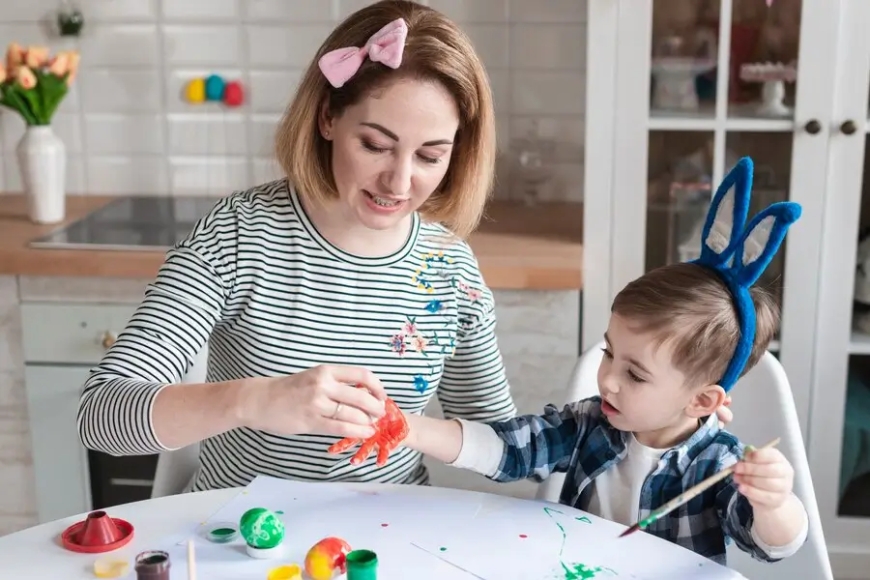Innovative ABA Therapy Techniques That Work
When most people think of Applied Behavior Analysis, they picture traditional methods like reward charts, flashcards, or repetitive tasks

When most people think of Applied Behavior Analysis, they picture traditional methods like reward charts, flashcards, or repetitive tasks. While these foundational strategies are effective, the field is growing and evolving rapidly. Therapists and researchers are constantly exploring new ways to engage children and adults through more creative and personalized methods. At the heart of these modern tools is ABA Therapy, still rooted in data and behavior science but now paired with innovation and flexibility.
Personalized Learning Plans for Every Child
Modern ABA Therapy moves away from one-size-fits-all. Now, therapists create highly tailored plans to meet each learners strengths, needs, and interests.
Natural Environment Teaching (NET)
Learning happens best when it feels natural. NET takes therapy into real-life settings, like parks, classrooms, or homes, making it more relevant and effective.
Play-Based Therapy Methods
Incorporating play helps reduce anxiety and increase motivation. Therapists use toys, games, and imaginative play to encourage learning in a fun and relaxed way.
Peer-Mediated Instruction
Kids learn a lot from their peers. This approach uses peer modeling and social groups to teach important social, communication, and behavioral skills.
Technology-Assisted Learning
Tablets, speech apps, and learning games offer interactive ways to reinforce behavior and communication skills while tracking data in real time.
Incorporating Art and Music
Art and music can open doors for children who struggle with traditional communication. These creative forms of therapy help express emotions and boost focus.
Parent Coaching and Training
Empowering parents is essential. By teaching parents the basics of ABA strategies, therapy continues beyond sessions and into everyday life.
Virtual ABA Expands Access
One of the most important innovations is virtual aba. Through video calls and online tools, children in remote areas or during difficult times (like during COVID-19) can still receive consistent and personalized therapy. It allows for flexible scheduling, minimizes travel time, and enables real-time feedback for parents and caregivers. Virtual therapy can also include digital tools and online games that enhance engagement.
Mindfulness and Emotional Regulation
New ABA methods teach children how to understand and regulate their emotions. Breathing exercises, visual calming tools, and mindfulness practices are used during therapy sessions to build inner awareness and control.
Movement-Based Learning
Sometimes, sitting still isn't the best way to learn. Movement-based strategies like dance, yoga, or obstacle courses help children burn off energy and learn through action.
Functional Communication Training (FCT)
FCT focuses on replacing challenging behaviors with appropriate communication. Whether through speaking, sign language, or communication devices, this method teaches how to ask for needs without meltdowns or aggression.
Video Modeling
Children watch videos of themselves or others performing a task correctly. Watching and repeating the steps shown in the video helps build independence in everyday routines.
Social Stories and Visual Supports
Visual schedules, step-by-step charts, and simple social stories help kids understand whats expected. These tools reduce anxiety and support transitions between tasks.
Group-Based ABA Sessions
Group therapy allows children to practice skills with others. It builds teamwork, social confidence, and turn-taking while still applying the core principles of ABA.
Integrating Sensory Activities
Many children with autism have sensory sensitivities. Incorporating tactile play, sensory bins, weighted blankets, or sound therapy can improve focus and comfort during learning.
Using Special Interests as Motivators
Instead of generic rewards, therapists now often use the childs specific interestslike dinosaurs, trains, or certain TV showsas part of learning. This boosts engagement and motivation.
Collaboration with Schools and Teachers
Modern ABA encourages stronger partnerships with educators. Sharing data and strategies helps reinforce learning across home, school, and therapy settings.
Culturally Responsive ABA
Cultural values, family routines, and beliefs are respected more in todays therapy approaches. Culturally sensitive ABA makes families feel heard and included in treatment.
Self-Advocacy and Independence Skills
Instead of only shaping behavior, therapy now focuses on helping children learn to make choices, express opinions, and build independence for future success.
Tech-Driven Data Collection
Gone are the days of paper charts. Today, apps and devices allow therapists to track progress instantly, make quick adjustments, and share updates with families more efficiently.
Conclusion
ABA Therapy has come a long way from its traditional methods. With the help of innovative techniques like virtual ABA, creative tools, and personalized strategies, therapy today is more engaging, flexible, and effective than ever before. These advancements not only support childrens development but also empower families and educators to be part of the progress. The future of ABA is bright, compassionate, and smarter than ever.







































